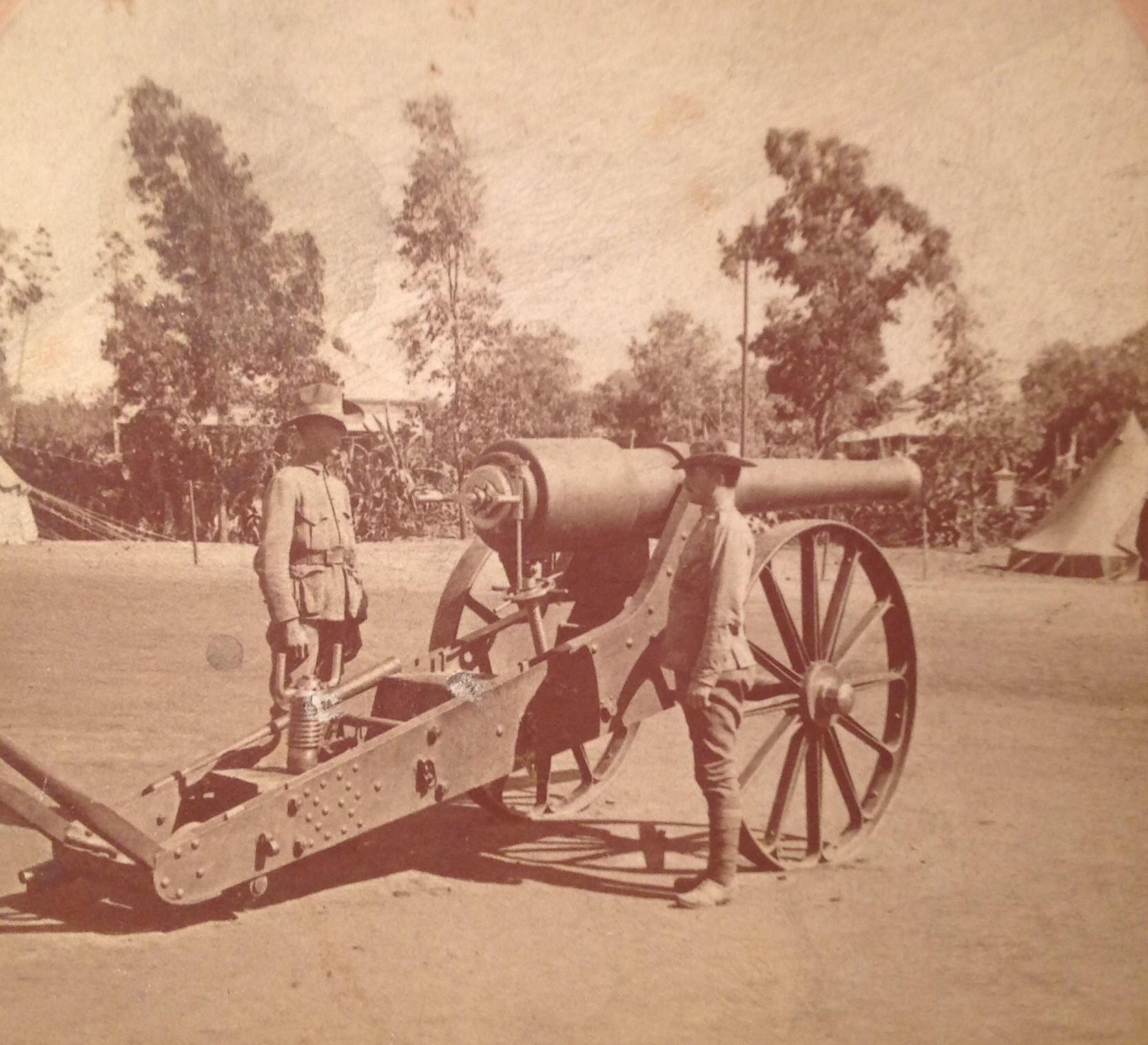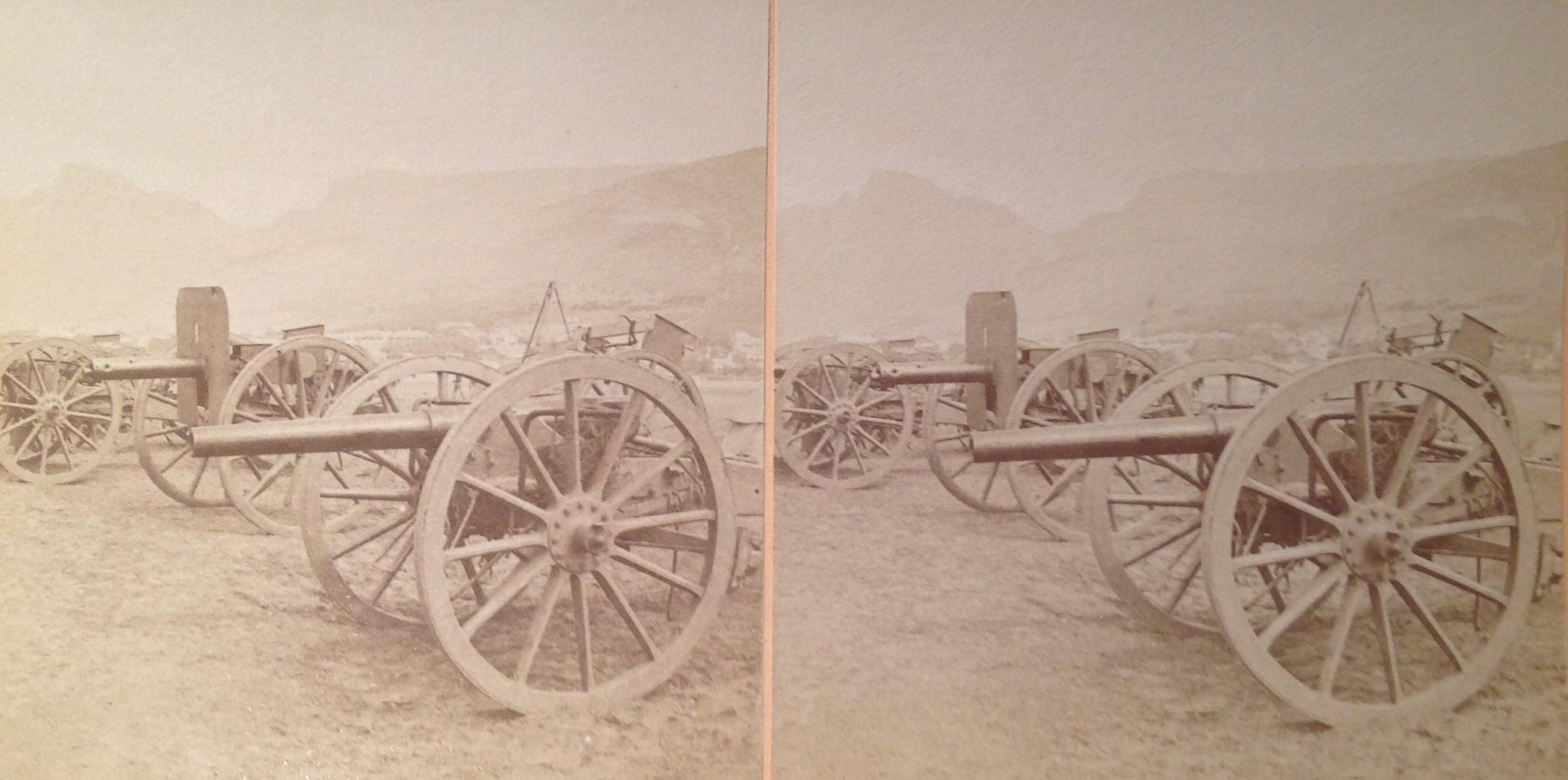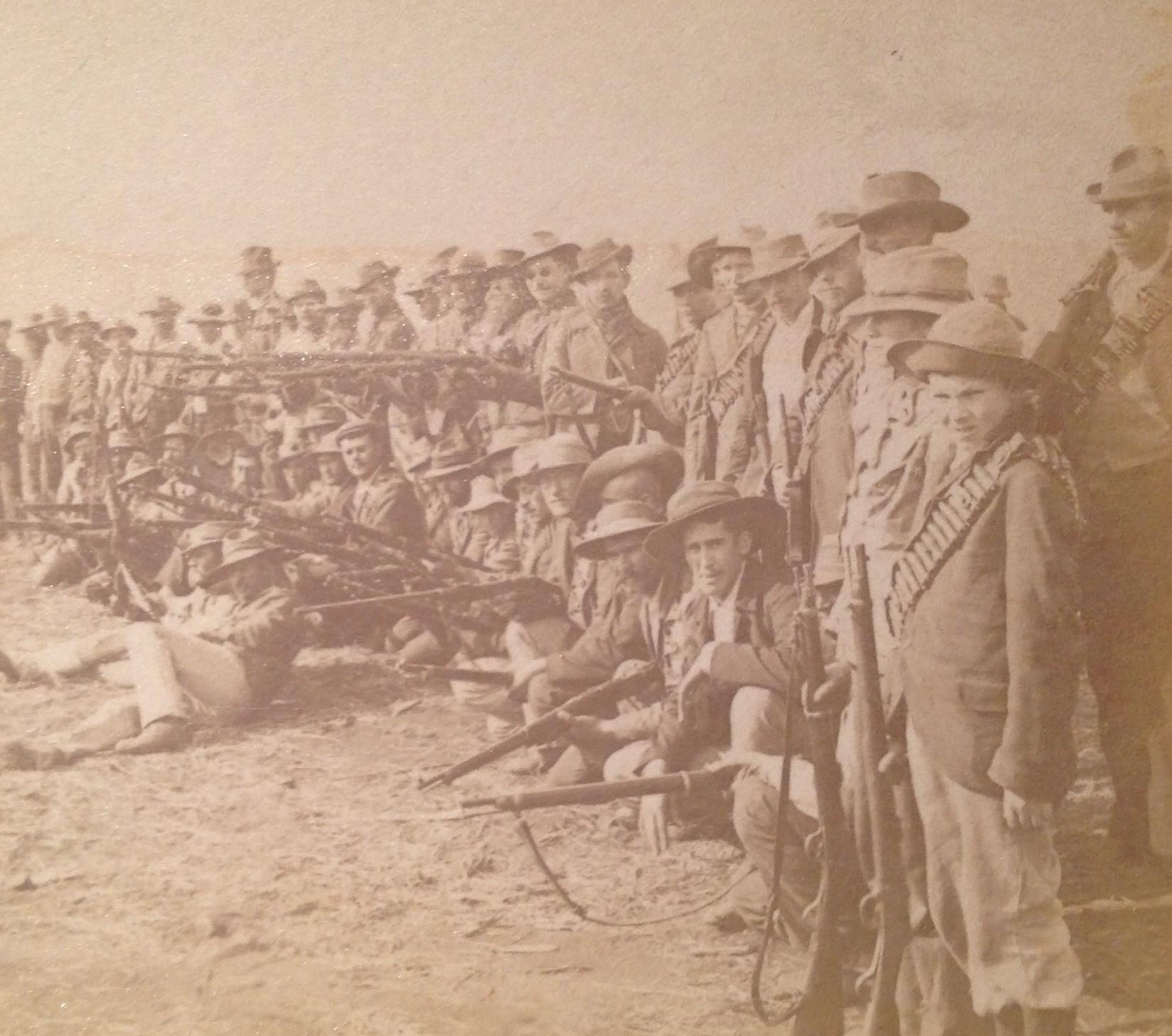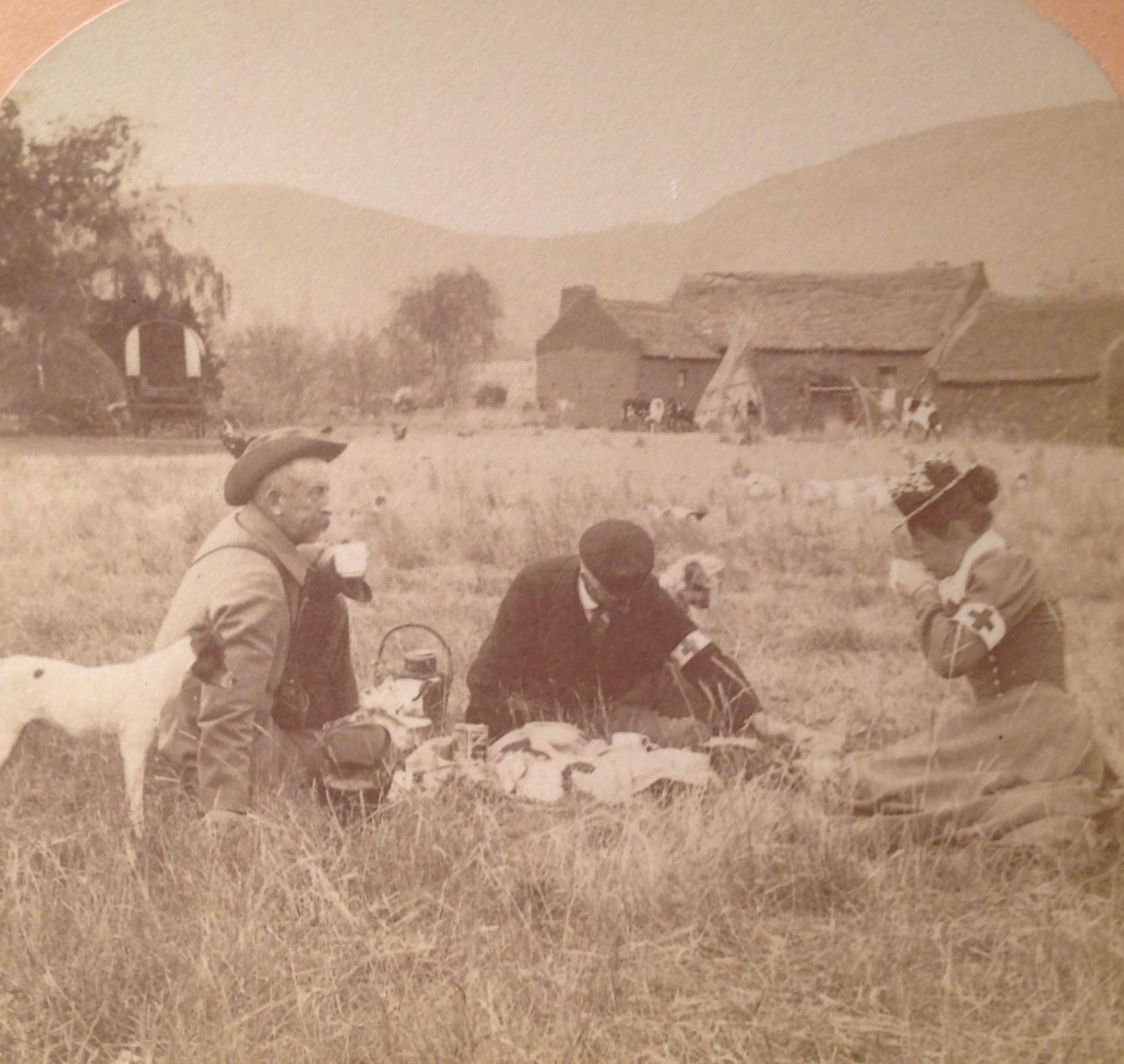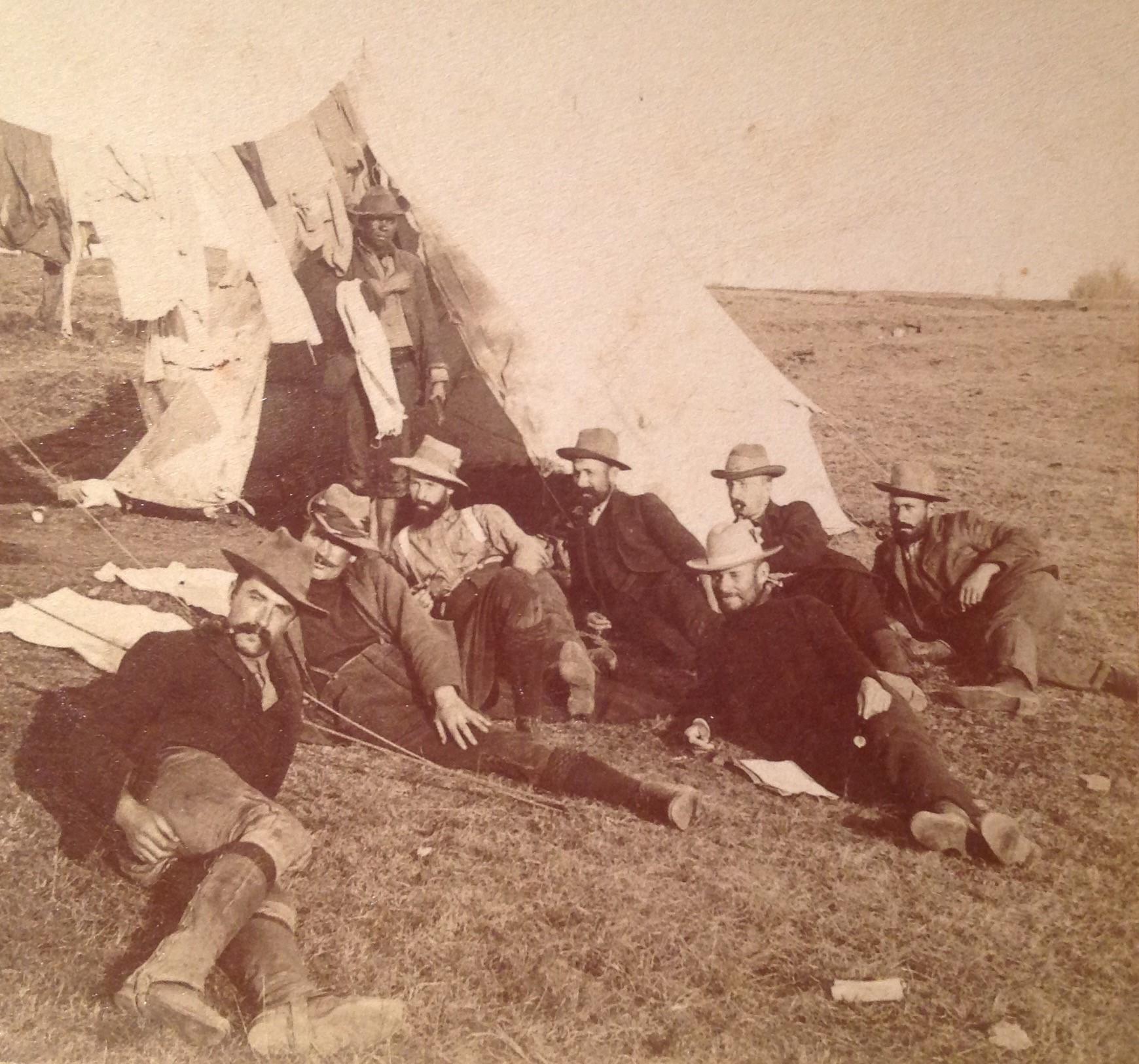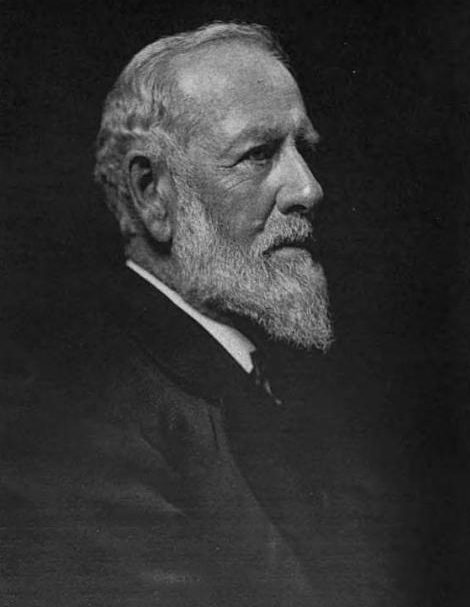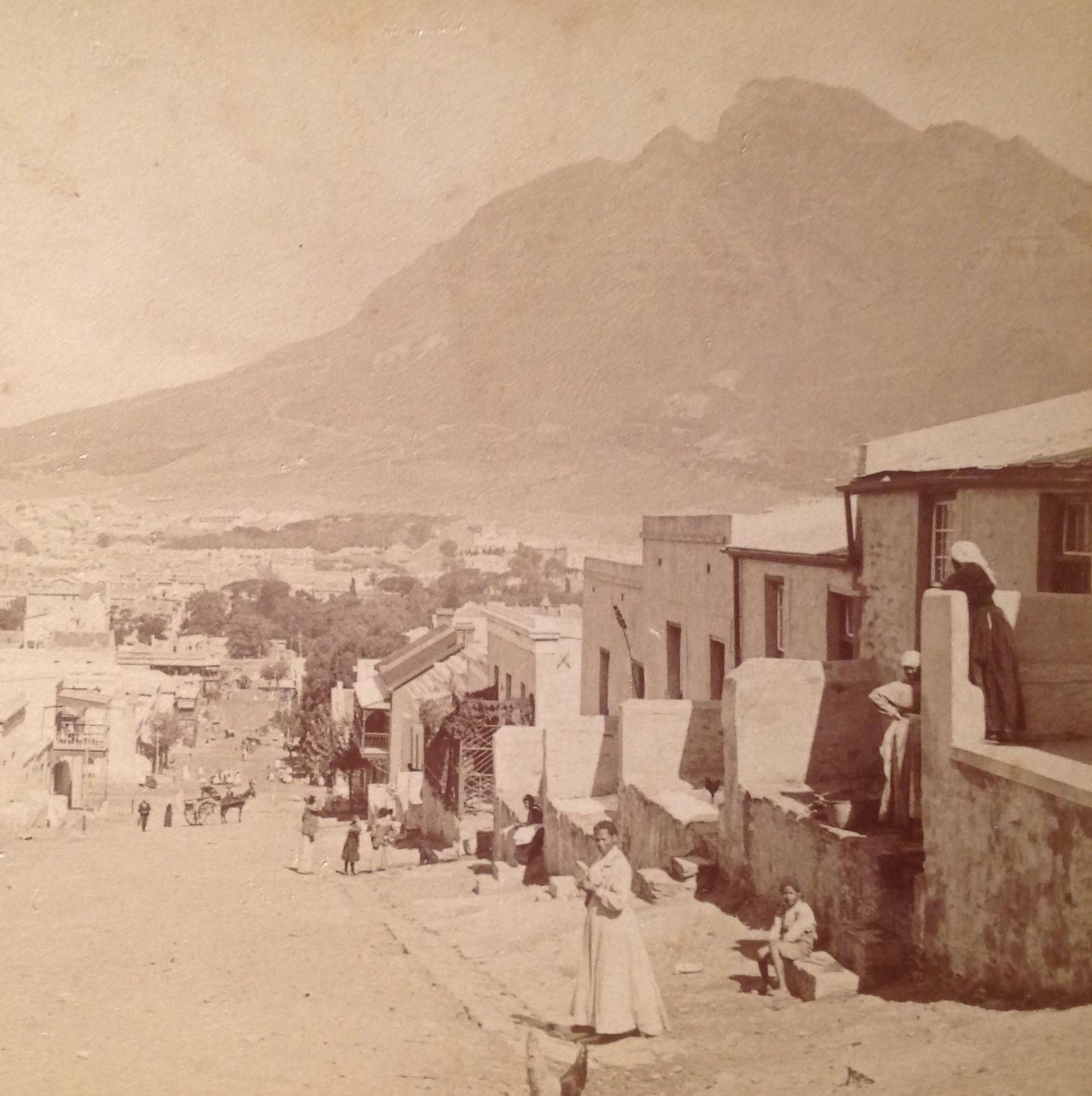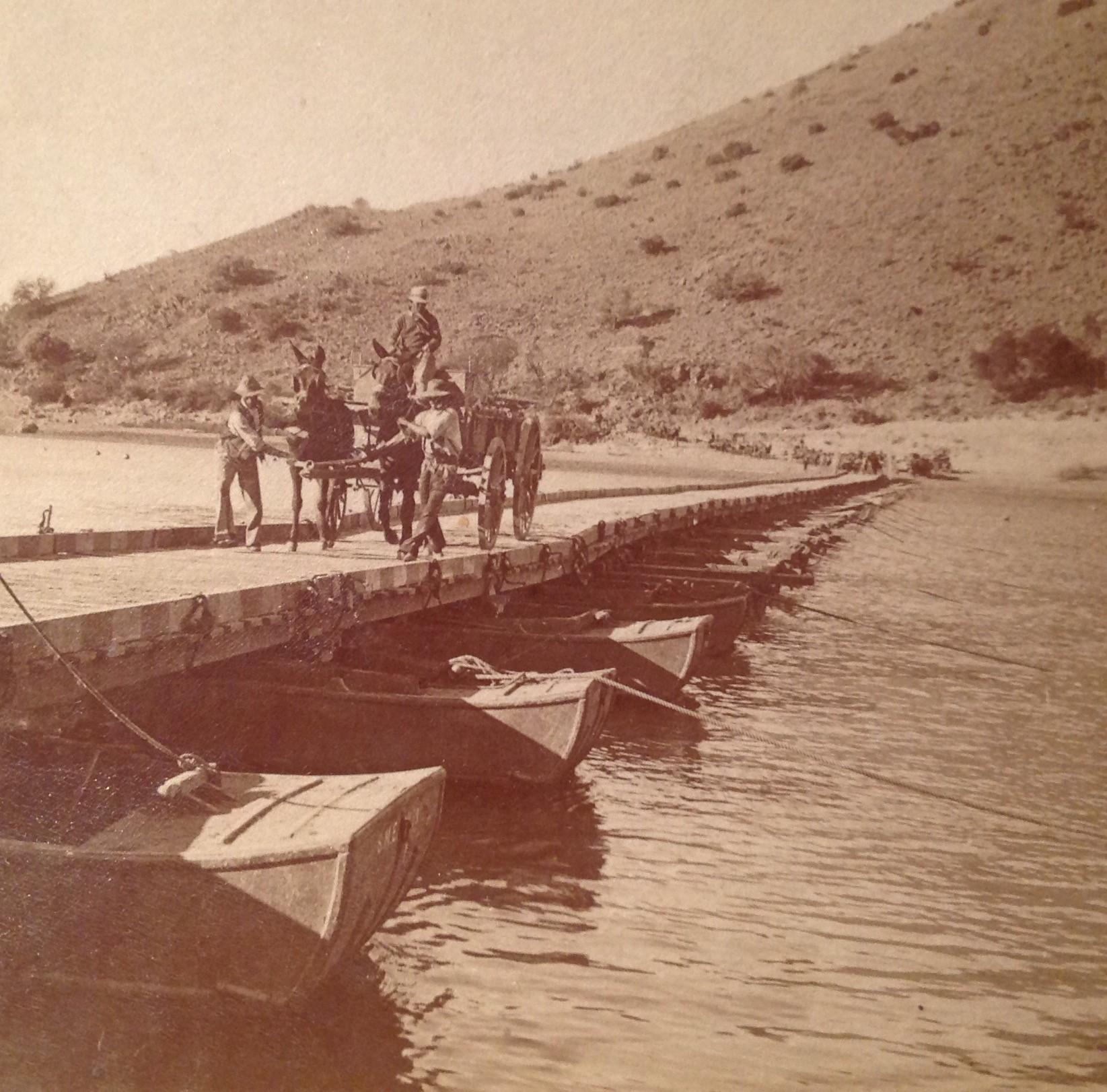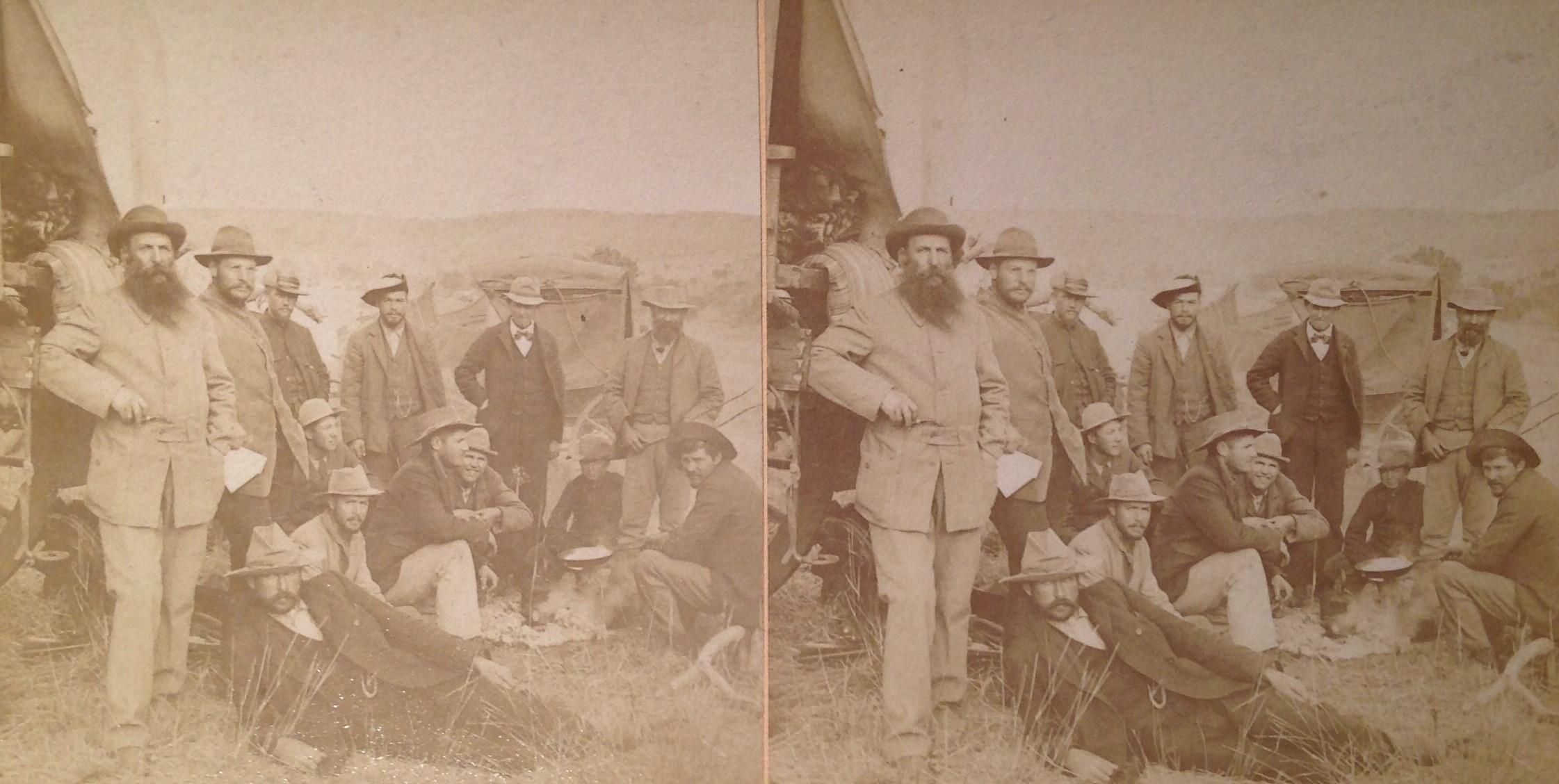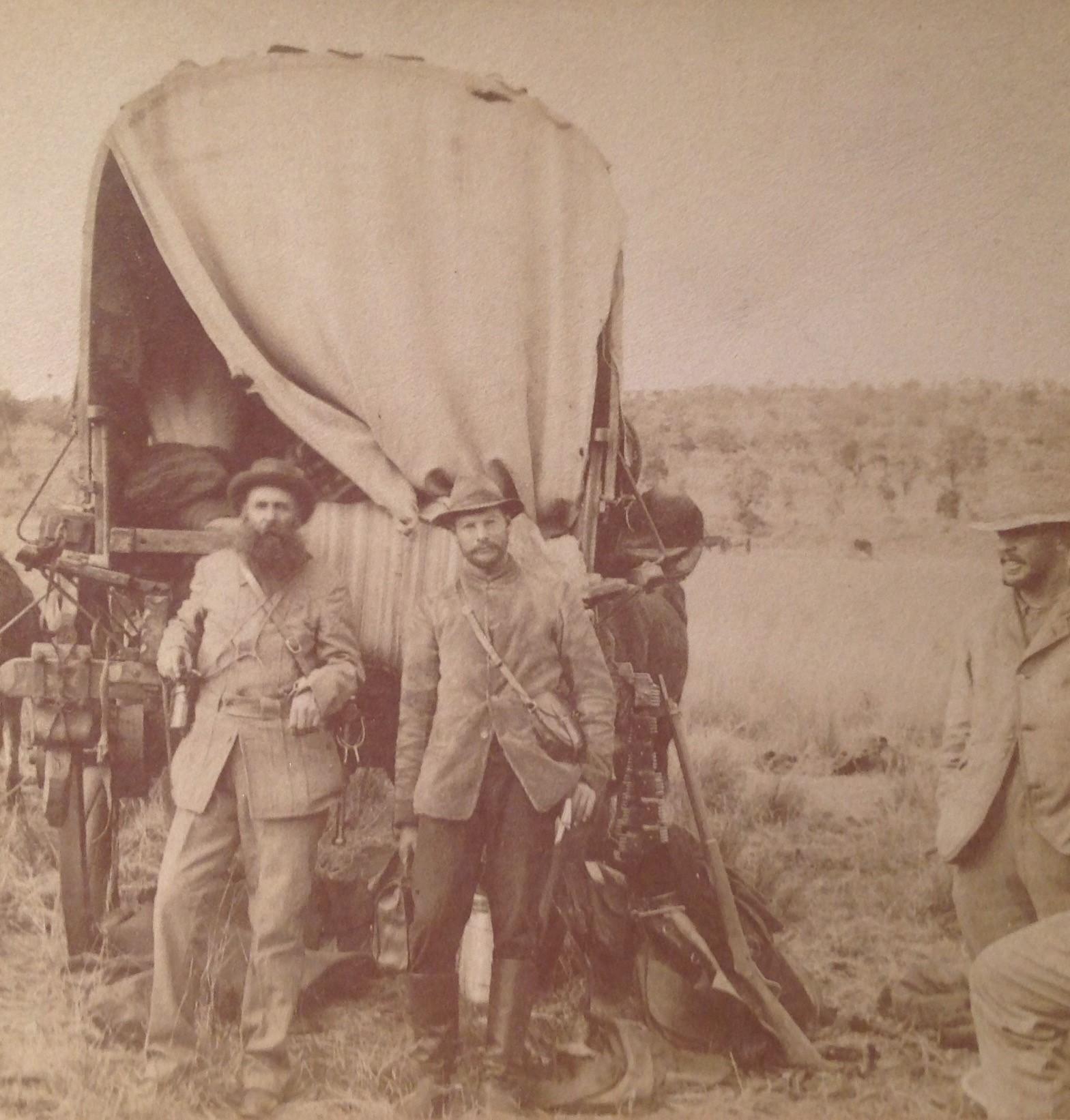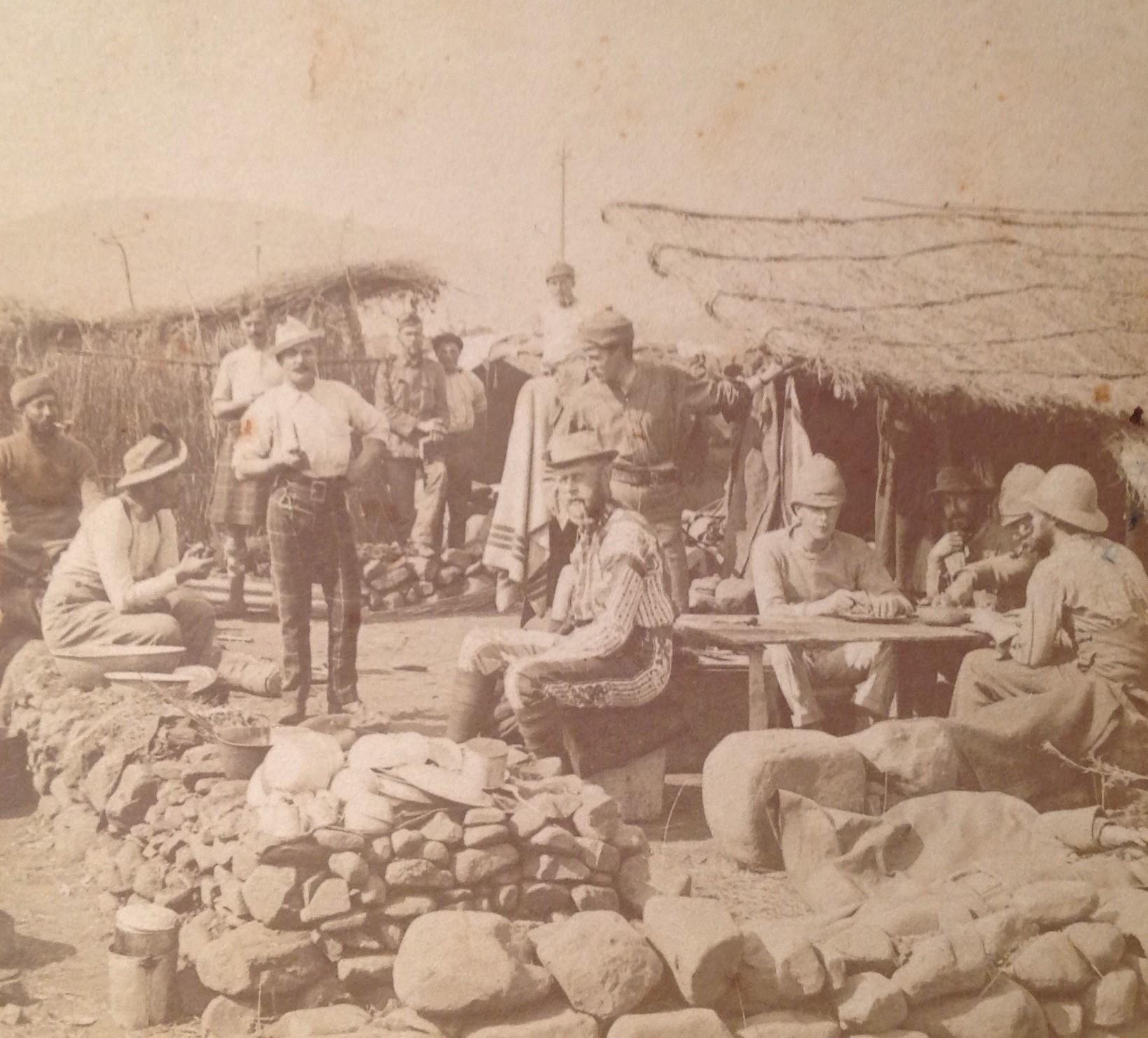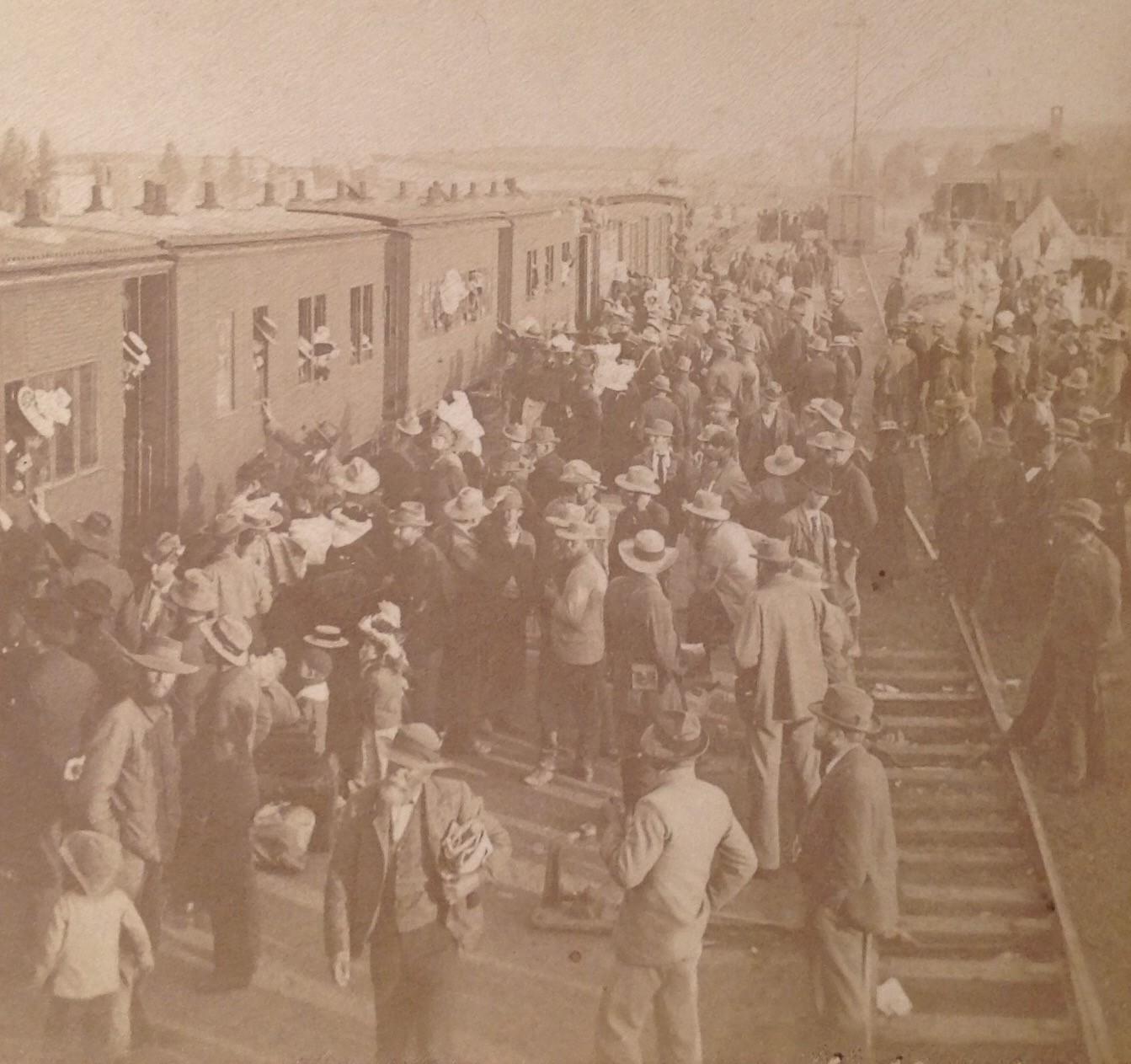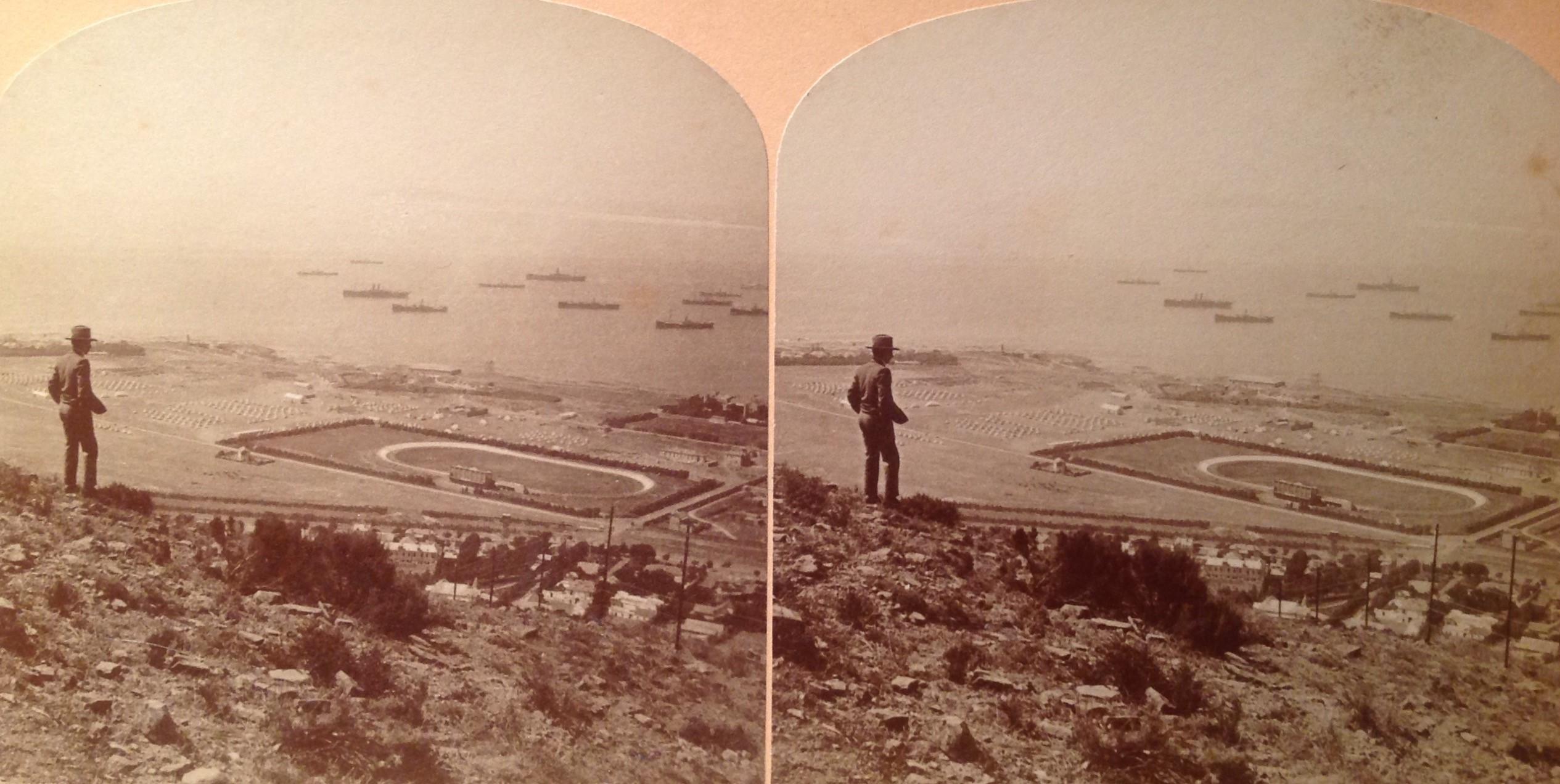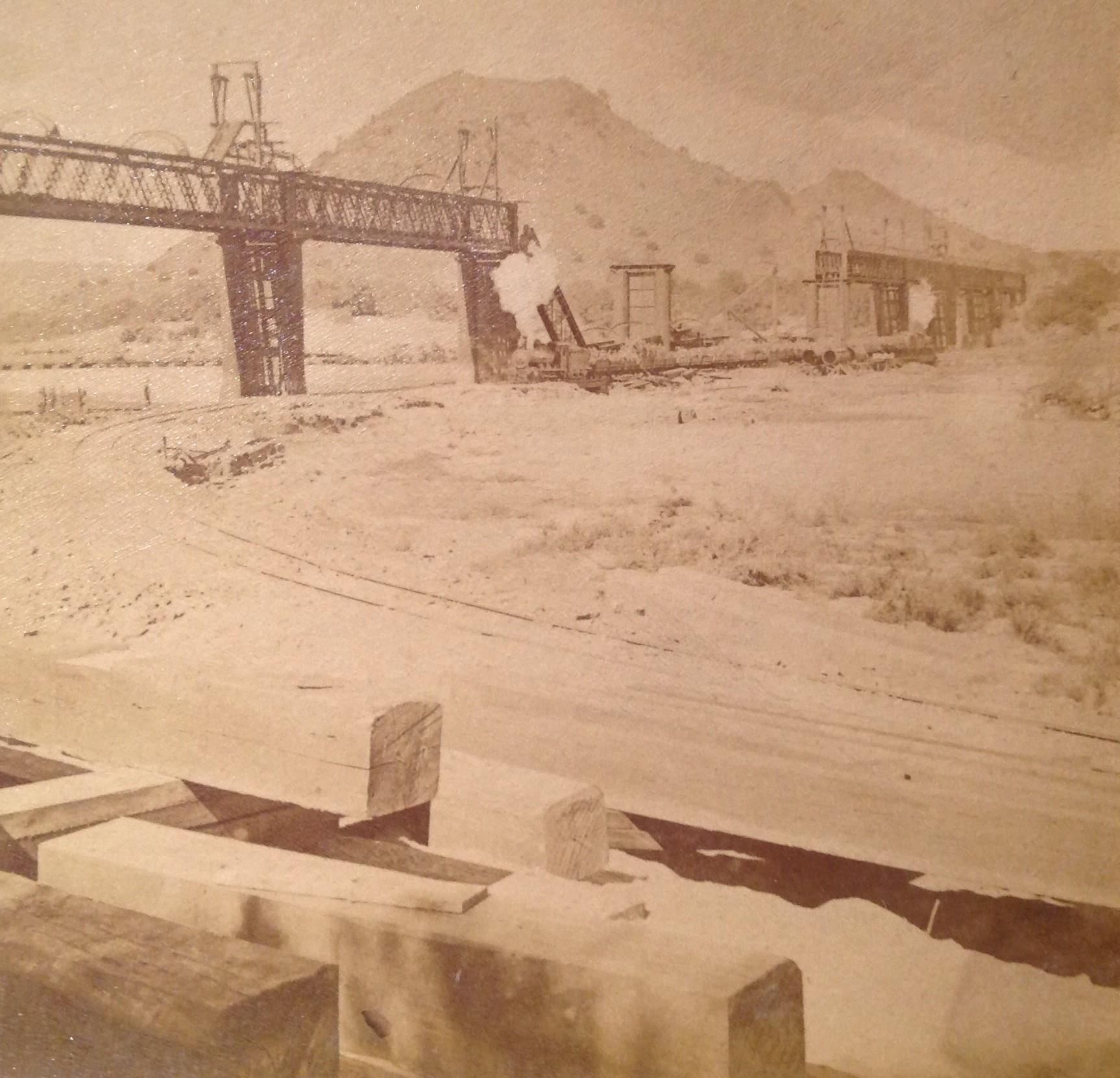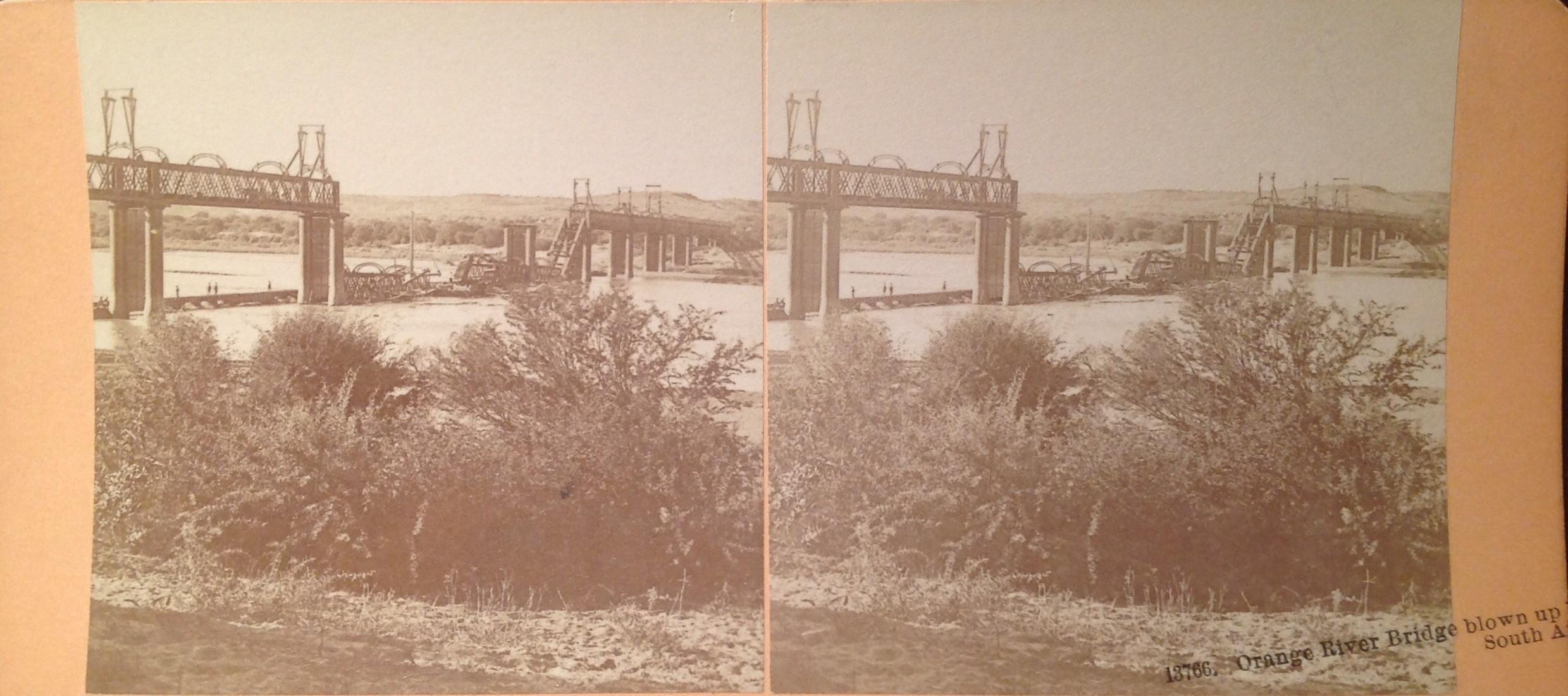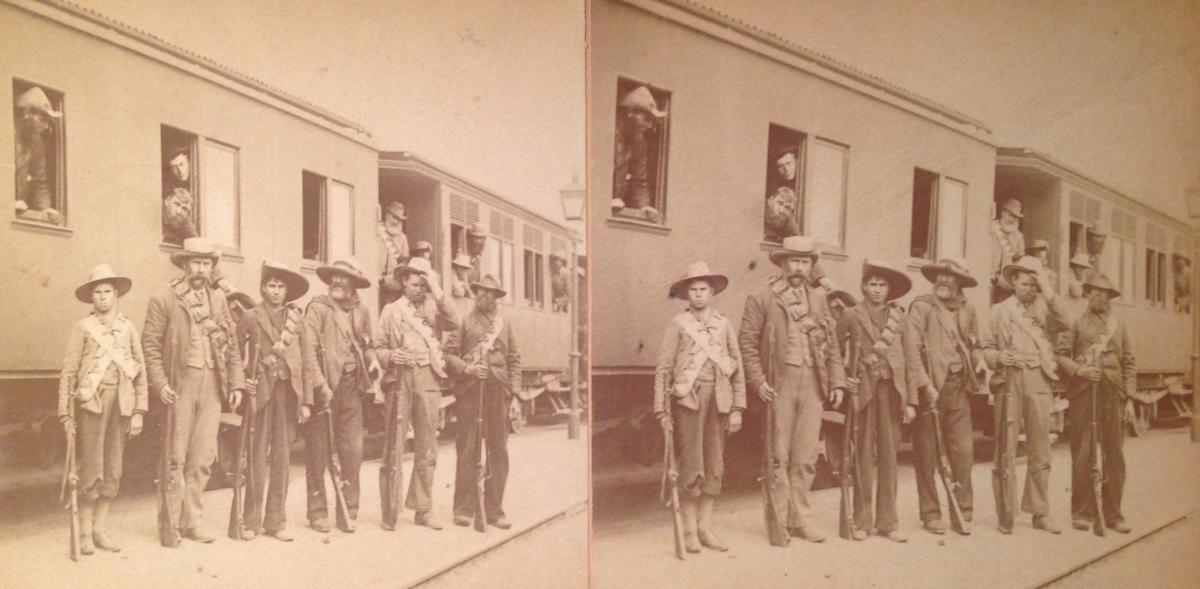
Disclaimer: Any views expressed by individuals and organisations are their own and do not in any way represent the views of The Heritage Portal. If you find any mistakes or historical inaccuracies, please contact the editor.
The primary purpose of this article is to introduce the first known catalogue of Anglo-Boer war stereo photographs produced by the American based B.W. Kilburn & Company (Version 1 – as at June 2021 - click here to view).
This article is the second in a series on South African Anglo-Boer war stereo photographs, also referred to as stereoviews, produced by American based entities. The first in the series was on the Anglo-Boer war stereo photographs produced by another American entity, namely Underwood & Underwood (in this article the stereoview is also described in more detail).
“Long Cecil” the big gun built by the de Beers company during the siege of Kimberly (sic). Long Cecil is a single cannon, designed by an American citizen, George Labram. Today the gun is located on the stylobate (facing the Free State) of the Honoured Dead Memorial in Kimberley.
The monsters that raised the siege at Kimberly (sic). This photograph was clearly taken after the cannons were off loaded at the Cape Town harbour
The young Boer of twelve fights side by side with the gray (sic) hairs of sixty, on the firing line. The description of this image has probably been sensationalised in that a similar photograph featuring the same young boy (not included in this article) carries the description: “The Boer guards at Nooitgedacht prison”.
Introduction
Stereo photography is the process whereby mounted pairs of slightly differing photographs give the illusion of three dimensionality when viewed through a stereo-viewer (also referred to as a stereoscope).
It is rather ironic that stereoviews produced during the Anglo-Boer war were all produced by foreign entities (mainly American, British & Australian). To date, no Anglo-Boer war stereoviews produced by a South African establishment have been identified by the author.
Through the photographic efforts of companies such as Underwood & Underwood, Keystone View and Kilburn, stereo photographs reached their peak between 1900-1935. These same companies were also in competition with each other during the Anglo-Boer war period.
Compared to Underwood & Underwood stereoviews, Kilburn Anglo-Boer war stereoviews:
- had a lower number of images produced;
- are therefore less common;
- generally, of better photographic quality;
- include very few staged images;
- very few image descriptions include dates;
- were not produced in boxed sets;
- had no descriptors on back of cards.
Taking breakfast on a Boer farm. Two of the individuals can be seen wearing medic armbands. The lady in the photograph can also been seen on at least two other Kilburn photographs.
Wash day in the Irish brigade. Given the individual standing in front of the tent in the background, it is doubtful whether the soldiers were washing their own clothes on the day.
Kilburn brother’s partnership of some 15 years
The Kilburn brothers were seventh-generation New Englanders.
Their father, Josiah Kilburn, was an iron founder who manufactured Franconia stoves. Aged 16, Benjamin received his education as a machinist in Fall River, Massachusetts. Four years later (late 1840s), Benjamin returned to Littleton, New Hampshire, where he became a partner in his father’s foundry (Josiah Kilburn & Son). He and his younger brother Edward both worked with their father at this family establishment. Edward however left this family business at the age of 25 (during 1855) whilst Benjamin continued another few years (until the early 1860s) before taking up the art of photography on a full time basis with Edward – then already an established photographer for some 5 to 6 years.
During the early 1860s Edward and Benjamin started their photographic careers as suppliers of American views of the White Mountains and New Hampshire scenery. The brother’s business quickly expanded and by 1869 they had a large plant with a multitude of stereoview titles for sale. When Edward retired after some 15 years into the partnership, Benjamin took over full operations including all photography.
Both brothers also served in the Civil War between September 1862 and February 1863.
Stereo photography was introduced to America more than ten years prior to the Kilburn brothers started publishing their stereoviews, but it became an especially popular form of parlour entertainment in the decade following the Civil War.
Benjamin West Kilburn (1827 – 1909)
Benjamin West Kilburn was born on 10 December 1827 in Littleton, New Hampshire and died during January 1909 aged 82. He started his photography career in the early 1860’s, along with his younger brother Edward.
Benjamin eventually became a famous American photographer and stereoview publisher known for the unique landscape images of the growing American and Canadian states, provincial and national parks. Benjamin was an outdoorsman fond of hunting and mountain climbing for which his choice of career as photographer was fitting considering the photographic themes captured by him.
Nothing deterred Benjamin, along with his friend and admirer Edward Wilson of the Philadelphia Photographer from hiking once each year to New Hampshire's most formidable peak. In the beginning, Benjamin visited the newly established government weather observatory on the mountain where he left a stereo camera with the necessary equipment to produce a series of views.
Often with around 75 pounds of equipment strapped to his back, the number of occasions Benjamin summited Mount Washington (the highest mountain peak east of the Rockies) showed his courage and the tenacity required for business survival in the early days of photography.
It is recorded that during his lifetime, Benjamin made four trips to Europe and that on one of these occasions he photographed the Forth Rail Bridge in Scotland.
Other snippets on Benjamin:
- in order to circumvent tripod usage, Benjamin invented a photo “gun” camera, which was manufactured by Scovill Mfg. Co. between 1882 and 1886;
- an American Civil war veteran, Benjamin was a sergeant in Company D, 13th New Hampshire Volunteer Infantry during which he participated with his unit in the Civil War battle of Fredericksburg, Virginia;
- he was a legislator in the New Hampshire General Court;
- he was a civic-minded citizen, developed an early fire-fighting apparatus and was involved in search and rescues on Mount Washington;
- he was active in the National Photographic Association;
- as a business entity, B.W. Kilburn & Co was the second highest taxpayer in Littleton at the time.
Benjamin was affectionately referred to as “BWK" by his employees.
Portrait of Benjamin Kilburn
Edward Kilburn (1830 – 1884)
Edward, 3 years Benjamin’s junior, was born during 1830 and died at the age of 54 (during 1884).
Edward is thought to have been the initiator of the Kilburn photographic establishment in that prior to the war between the States, Edward ran a studio that he had bought from OC Bolton during 1855.
During the mid-1860s, Edward and his older brother established their photographic partnership Kilburn Brothers in Littleton, New Hampshire (also described as the one-time stereo capitol of the world) - a company that focused on stereoview publication. Both brothers initially acted as principal photographers. It is recorded that Benjamin eventually became the main photographer with Edward meticulously developing the images.
Their first stereoviews were produced in Edward Kilburn's studio in the McCoy Block in Littleton. The location proved to be too small following their popularity. The business remained family-centred and largely focused on local subjects and talent.
The Kilburn’s were soon fully immersed in the stereoview busines and the brother’s firm began the climb to world leadership in stereoview production.
Edward Kilburn sold his share of the well-established photographic entity to his brother Benjamin during the mid-1870s and retired to manage his farm where he died a number of years later. In conjunction with farming, it has also been suggested that he became a religious servant.
Edward would not have had any part in producing Anglo-Boer war stereoviews in that he died some 15 years prior to the start of this war.
B.W. Kilburn & Co – The company
After Edward left the firm, Benjamin became the key stakeholder and went on to established B.W. Kilburn & Co. in the same town during 1876. Benjamin's daughter Elizabeth and her husband William Jackson also became employees who helped to develop the top-quality products associated with Kilburn views.
For the next 33 years (1876 – 1909) the company established itself as one of the major publishers of worldwide stereoviews.
Kilburn’s popular pictures portrayed nature as works of art, informing tourists how and from what vantage point they should look at particular sites in order to derive the greatest benefit. Some hundred people were employed at the Littleton factory.
The new B. W. Kilburn & Company brought many changes in stereoscopic technology and audience. By 1890, Benjamin's second son-in-law, the attorney Daniel Clark Remich, had joined the board of the firm, as well as James M. Davis, the agent for a growing army of door-to-door salesmen.
The Columbian Exposition at Chicago in 1893 became the high-water mark for their business as they acquired exclusive rights to sell stereoviews of this World Fair.
In time, B.W. Kilburn & Co. became a pioneering business that not only focussed on national but also international photojournalism, documenting amongst a number of other events the presidential inauguration of Grover Cleveland, the Johnstown Flood in Pennsylvania, the Anglo-Boer War, the Boxer Rebellion and the Spanish–American War.
The Kilburn Company never issued boxed sets, which may have been a reason for the company's demise. Whilst most of the early pioneering stereoview publishers had withdrawn from the business by the 1880's, the Kilburn Company lasted until 1909.
When it ceased operations during 1909, the company had produced between 18 000 and 20 000 different views with nearly 100 000 glass negatives (many variations existed for most prints).
Street Scene, Cape Town. This image was taken in the Bo-Kaap showing Malay quarters
Pontoon bridge, Norval’s Pont. Norvalspont is an Afrikaans name for Norval’s ferry. The Norval’s, who originated from Scotland, were comb makers who settled in the area. The abundant supply of tortoises to be found on the farm provided for an almost limitless supply of tortoise shell, the optimum material for the finest combs.
The B.W. Kilburn & Co. history is sadly poorly documented in that only a series of seven ledgers (which went to the Keystone Company when they bought out Kilburn during 1909) provide some information on the Kilburn production.
Not only remembered as a visual historian but also as the world’s most extensive producer of stereoviews between 1865 and 1909, B.W. Kilburn & Co. produced some five million stereo cards by 1890. Post this period the company produced an average of three thousand stereo cards per day (around 600 000 stereoviews yearly), which were sold for between $2.00 and $2.50 a dozen.
The Kilburn image collection passed to the Keystone View Company during 1909/10. The next article in the series will be on Anglo-Boer war images produced by Keystone.
In the company’s existence of some 55 years (Kilburn Brother days included), the company produced over 2000 views of northern New Hampshire alone. Pioneering the concept of door-to-door sales of their end product, the company also employed a small crew of photographers by 1890 to take views all over the world.
As the crew travelled, they produced glass negatives which were shipped back to Littleton to be developed and printed. It has been suggested Benjamin that also acquired negatives from other photographers.
The gap left by B.W. Kilburn & Co’s demise was eventually filled by several of its former competitors and salesmen such as W. F. Burns & Co. of St. Louis; Underwood & Underwood brothers of New York; B. L. Singley of the Keystone View Company and others.
The James. M. Davis Link
Many of the Kilburn stereoviews also include the name James M. Davis imprinted on the left side of the card (Kilburn’s name was imprinted in the right and on the back of the card).
James M. Davis was born in North Carolina in 1853 and began selling stereo cards for the Kilburn Brothers as early as 1872 whilst still at school. Davis became associated with B. W. Kilburn & Co. in the early 1880’s and was in charge of distribution. He also acted as a photographer. Davis took over most of the day to day operations after 1901. As general manager, located first in Philadelphia and later in New York and St. Louis, he used his cable address "Artistic" to direct production, send photographers to distant countries and hire a sales force to distribute the views.
A small number of cards reflect his name, followed by New York City and St Louis, Mo whilst the larger percentage of cards have his name followed by New York, St. Louis, Liverpool, Toronto, Sydney. This confirms how widely distributed Kilburn stereoviews became.
The Kilburn Company closed in 1909, selling its negatives to the Keystone View Company. Davis subsequently became a salesman for Underwood & Underwood as well as H.C. White.
Anglo-Boer war and the Kilburn
War correspondents and news photographers descended upon South Africa at the start of the Anglo-Boer war, among them a B.W. Kilburn & Co appointed photographer.
It is highly improbable that Benjamin, or Davis for that matter, ever set foot on South African soil.
Unlike Underwood & Underwood photographers, the single American photographer appointed or contracted by Kilburn seemed to have a more balanced approach in terms of photographing the events during the war. This photographer, who has not been identified to date, was clearly not a news photographer after sensational, gory war images, nor did he seem to be part of any pro-British or anti-Boer propaganda campaign. He stayed away from conflict zones but still captured other military related activities with his primary market in mind, namely the American middle class.
The possibility also exists that some photographs may also have been bought from South African based photographers by Kilburn. This version is however highly improbable.
Underwood & Underwood probably had more than one photographer in the field during the Anglo-Boer war period, explaining the difference in the number of images produced by the two competing photographic establishments – More about this later.
The Anglo-Boer war was not the first war to be captured stereographically. The American Civil war (1861 – 1865) carries this honour.
The Kilburn photographer would have used bulky stereo cameras which had two lenses by which the stereoscopic effect was achieved. The cameras, mounted on tripods, did not use dry films but glass plates. These cameras were not suitable for action photography in that they were heavy and difficult to move around or set up in the rough terrain. Lengthy exposure times also made action photography impossible.
Reflecting on the grim realities of the war was not part of the Kilburn programme in that the dead were never photographed.
After June 1900, the Anglo-Boer war was no longer newsworthy, resulting in many international photographers leaving the country, thinking that the war was over. During June 1900, the Boxer uprising in China shifted the public’s interest. The largest portion of the Kilburn Anglo-Boer war stereo images were therefore taken from between early 1900 until August 1900 (latest dated Kilburn image states 17 August 1900) - a relatively short period of some 8 months. It is suggested that the unknown Kilburn photographer only arrived after the start of the war (probably early 1900) and would therefore have started capturing images of the war at least 3 to 4 month later than the Underwood & Underwood photographers.
Due to foreign photographers leaving the country, no Kilburn stereoviews exist of the guerilla phase of the war or the scorched earth policy. Also, no stereo images relating to concentration camps or prisoners of war have been identified to date.
Stereoviews of most interest remain the portraits of key military figures (de la Rey was clearly popular), followed by scenes of damaged bridges, medical personnel & hospitals, heavy artillery, train station activity and Lord Robert’s advance on Pretoria.
General de la Rey and staff in camp. Next to de la Rey stands Ferreira. This photograph was clearly taken at a different time compared to the image below in that the locations seems different. De le Rey and Ferreira also do not have any leather belts around their chests in this image. Note the young boy seated between the two men standing on the right.
General de la Rey and secretary Fervira (sic). Note the rifle and ammunition belt next to the ox-wagon. Also seem image 13850 above. The photographs were clearly taken at different locations.
Some of England’s nobility in Nooitgedacht prison showing Mr Goschen (central figure) nephew of first Lord of Admirality. Nooitgedacht translates into “never thought”. The surviving prisoners were released from this prison (located in the Eland’s valley) on 30 August 1900. The central figure, Arthur Alec Goshen (1880 -1975) was a 2nd lieutenant in the Royal artillery during the Anglo-Boer war. He served in both the world wars and held the final rank of Major General. The first Lord of Admirality referred to is his uncle George Goschen (1831 – 1907)
Boer women and children passing through Machadodorp sent out by Lord Roberts. The fact that no British soldiers are visible in the image seems to suggest that this is a peaceful scene of passengers departing for Pretoria following Robert’s command for women and children to leave Machadodorp?
As mentioned above, no images of actual engagement on the battlefield exist. The images mostly present static scenes. The stereoviews present a “sanitised” picture of military life in tented camps, parades, blown-up bridges or posed images of soldiers in the firing line.
The British army encamped in South Africa. This image was taken in Cape Town showing the horse racing course in the centre surrounded by military tents with the entrance to Cape Town harbour in the background.
Orange River bridge at Norval’s Pont showing train loaded with British troops crossing the deviation. The bridge was blown up by the Boers on 5 March 1900. In the photograph below, the river shows a higher water level, confirming that the rail crossing over the riverbed was only a temporary measure. By the end of 1900 the British had rebuild a temporary rail bridge (on same spot the bridge stands today).
The Orange River bridge blown up by the Boers, Norval’s Pont. The Boers blew up three of the bridge’s columns on 5 March 1900. This photograph is similar to the image above, but shows the river in flood. It is interesting that Kilburn elected to place this misprinted card into circulation.
Kilburn’s initiative to have the Anglo-Boer war photographed, at least a portion thereof, has vastly contributed to South African visual history – albeit only with some 244 images.
Ongoing research will need to confirm who the photographer was on South African soil that produced these valuable images.
Lesser known publishers of South African Anglo-Boer war images include: PerfecStereograph (HC White); Australasian Stereoscopic; American Stereoscopic Co (RT Young); The Whiting View Company; Realistic Travel Publisher; Tourist Series and Fine Art Photographers’ Publishing Co (BL Singley).
Analysis of Kilburn images:
Each stereoview has a title or descriptive caption at the bottom of the image. It is these titles that have been used to put together the attached catalogue. No descriptors appear on the back of the card.
The majority of cards state: “Photographed and Published by B.W. Kilburn – Littleton, N.H.” on the back.
There are a number of images which depict scenes which are not directly related to the military aspects of the war. These images were produced by Kilburn to fit in with the general aim of education. Several images of peaceful South African town or village street scenes or images of the South African population were also captured by the Kilburn photographer whilst residing in certain cities or traveling between the various locations capturing images of soldiers on the move.
In publishing the Anglo-Boer war stereoviews, Kilburn did apply a sequential numbering system, “interrupted” by other international themes. The card numbers, as it relates to the Anglo-Boer war, seem to start at number 13680 with the last recorded images being number 14256. (click here to view catalogue).
The author is of the view that, other than the missing descriptions for numbers as listed in the attached catalogue, no more than 20 Anglo-Boer war stereoview numbers, descriptions or card variants await to be identified and recorded in the Kilburn range of stereoviews – suggesting that Kilburn only produced a maximum of some 265 images during the Anglo-Boer war - still leaving it at a significant lower number compared to the number produced by Underwood & Underwood, namely around 525 images.
An analysis of the attached interim catalogue confirms:
- of the confirmed 244 Kilburn images to date, 178 descriptions (73%) have been recorded to date;
- the numbering ranges from between 13680 and 14256;
- this numbering range has not solely been allocated to Anglo-Boer war images in that some “interruptions” occur, where images with different themes also fall within the above numbering range;
- Kilburn stereoviews reflect a more “honest” and humanistic version of the war whereas Underwood & Underwood produced a number of staged action images with “fake” descriptions;
- the only Kilburn images that seem to be staged are those titled “In the firing line” (6 identified to date), showing soldiers all standing/lying in a line taking aim with their rifles;
- the Kilburn images provide a balanced view of both Boer and Brit (unlike the Underwood & Underwood images);
- the quality of the Kilburn images is generally of better quality compared to the Underwood and Underwood images;
- in the Kilburn collection, unlike in the Underwood & Underwood collection, a number of images with the same title and number provide for some slight deviations in that when the final image was produced, the image was either shifted to the left or the right showing parts on the one photograph that is not seen on the other (for example – at least three versions of image 13835 has been seen) ;
- only three Kilburn stereoviews containing dates in the description have been identified to date (6 April; 6 June & 17 August 1900);
- spelling mistakes in the titles also occurred (and remain largely unchanged in the attached catalogue) – The most interesting spelling mistake is the spelling of Groote Schuur (Grook Schur). The photographer probably recorded the name as he heard it and never verified the correct spelling. The word Groote Schuur can be loosely translated into “Large Shed”;
- at least one image number has surfaced with two very different images and descriptions (namely number 14245);
- at least one “misprint” has been identified where the title of the card has been printed over the image, which suggests a slip in factory quality control.
The attached catalogue was put together by recording images from several private South African based collections. The research needs to be expanded by studying and recording images in the collections of various museum and University collections - local and abroad. Variants can only be identified by visually comparing cards with each other – the most optimal way of doing so for any researcher would be by inspecting cards in person.
About the catalogue:
- The column “HPRC” indicates whether the image is contained in the Hardijzer Photographic Research Collection or not;
- The columns highlighted in yellow indicates numbering allocated to views with themes different to that of the Anglo-Boer war;
- Blank descriptions next to card numbers indicates that these cards have not been recorded/identified to date;
- Numbering in red confirms different image descriptions with the same image number.
The end of an era
The Kilburn name was a living photographic legend for close to 55 years (1855 – 1909).
Benjamin persuaded his son-in-law (Daniel C Remich) to forsake his law practice and join the burgeoning business. It was however during the Anglo-Boer war period (1901) that Benjamin was forced to be side-lined following ill-health.
When he accepted his father-in-law’s invitation, Dan Remich, a solid Littleton citizen in his own right, did not anticipate that he would preside over the dissolution of the Kilburn Company when stereoscopic fortunes started sliding followed by Benjamin passing on. Dan carried out Benjamin’s wishes in his own last will and testament in that the Kilburn-Remich Collection was bequeathed to the Littleton library by Remich. Remich died in 1917, eight years after the death of Benjamin.
The Kilburn-Remich legacy includes in remarkable condition an excellent cross section of the Kilburn production. An assumption that must be made is that the bequest consisted of views that were in stock at the time the Kilburn factory closed down in 1909. It was by no means a "master file" because gaps appeared in it in sporadic fashion. Absent from the cache, were stereoviews which were used to fuel the wood-burning heating system of the factory in the three-month closedown period. Among these, probably, were views that would not appear in the Kilburn-Remich Collection. Many single numbers and some sequences were lost this way.
When possible, Kilburn regularly made more than one negative. It is highly probable that Kilburn contract photographers were required to do the same. All of the Kilburn negatives available, plus the story of destroyed negatives has to be reviewed to get an accurate 50-year-plus production total. Kilburn ledgers give a precise picture of negatives of listed Kilburn views which were destroyed after Keystone acquired them.
Of the many American stereograph publishers, it is the size, longevity, and outstanding quality of the Kilburn stereographs that make the B.W. Kilburn & Co an important subject for ongoing study.
Benjamin has been credited by both his contemporaries and historians with producing most of the photography for the first ten or fifteen years of the firm's existence. Special attention, therefore, has been given to establishing which of the Kilburn stereographs were really made by B.W. Kilburn, and in determining which views were purchased or pirated from other publishers. Whilst identifying B.W. Kilburn's own work and artistic achievement is important, it is even more important to study the relationship between the personal style of individual photographers like B.W. Kilburn and how their work was affected by commercial demands and visual models in other media.
American researchers have identified some stereoviews (not related to the Anglo-Boer war) in which Benjamin Kilburn himself also appears as a sitter.
Acknowledgment
- Meagan Carr – Director at the Littleton Public Library (USA) for providing a record of Kilburn images in the library’s possession;
- The catalogue was combined with input from the following collectors/ex-collections over a 14-year period: Ron Cowan, Mervyn Emms (†), Hardijzer Photographic Research collection, Judd Kirkel, Kerneels Laubscher, Ray Lepan, Nigel Mason, Chris Smit (†) and Boet van der Walt (†).
Main image: Kilburn number 13865 – The Boer boys and old men on their way to the front. Image shows 3 young boys and 3 older men standing in front of a train at an unknown location
About the author: Carol is passionate about South African Photographica – anything and everything to do with the history of photography. He not only collects anything relating to photography, but also extensively conducts research in this field. He has published a variety of articles on this topic and assisted a publisher and fellow researchers in the field. Of particular interest to Carol are historical South African photographs. He is conducting research on South African based photographers from before 1910. Carol has one of the largest private photographic collections in South Africa.
Sources
- Benjamin West Kilburn – AKA Kilburn Brothers. The Yellowstone Stereoview Page (www.yellowstonestereoview.com)
- Benjamin W. Kilburn. (Wikipedia.org)
- B.W. Kilburn – American (1827 – 1909). National Galleries Scotland (www.nationalgallaries.org)
- Edward Kilburn. Smithsonian American Art Museum (www.americanart.si.edu)
- Hardijzer, C.H. (2018). Underwood and Underwood. (Theheritageportal.co.za)
- Hardijzer Photographic Research Collection
- Meet the famous stereo photographers – Ben Kilburn (www.stereoviewheaven.com)
- Southall, T.W. (1977). The Kilburn Brothers Stereoscopic View Company. Art & Art History ETDS – University of New Mexico (www.digitalrepository.unm.edu)
- Wolfe, L. (1987). Littelton’s Kilburn Cache - Early Kilburn Views Come to Light In One-Time Stereo Capitol of the World. Stereo world – Magazine of Stereo Photography - National Stereo Association (May/June) – (www.stereoworld.org)
Comments will load below. If for any reason none appear click here for some troubleshooting tips. If you would like to post a comment and need instructions click here.

